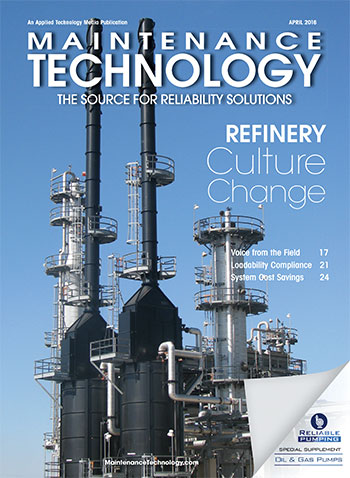The Lansing, MI-based maker of the anthrax vaccine BioThrax tells how careful refinements of its already sophisticated maintenance operation brought them the coveted win.
By Rick Carter, Executive Editor
References to “customer service” are frequent at the Lansing, MI, campus of Emergent BioSolutions (EBS), Inc., winner of the 2013 NAME (North American Maintenance Excellence) Award. Maintenance and facilities services team members mention it often when discussing how they serve their many internal customers in operations, production and research. Some 400 employees work at this site, which is a portion of the Biodefense division of publicly held EBS, headquartered in Rockville, MD. Most of these employees depend on the maintenance and facilities team to ensure the site’s complex operations run smoothly. Importantly, EBS/Lansing also pursues a seemingly high-risk business strategy where good customer service takes on elevated value: The division has only one primary external customer—the U.S. government—for whom it makes only one product: BioThrax, an injectable vaccine that protects against anthrax disease (see sidebar). It also happens that BioThrax is the only such anthrax vaccine licensed by the FDA, making it—and its manufacturing operation—unique in the world.
Master plan
EBS Lansing’s 12.5-acre campus in a semi-rural area northwest of Michigan’s capital city is situated on the state’s former Department of Public Health site. It still includes buildings that date from the 1930s when the state itself produced vaccines for residents through the Michigan Biologic Products Institute (MBPI). EBS bought MBPI through a public auction in 1998 (under its then-name BioPort Corporation) and has since introduced many updates inside the now-fenced-and razor-wired perimeter. These include new buildings, expanded manufacturing space (completed and in the process of qualification) and, most important, a plan to capitalize on a situation whereby every drop of product the plant makes is virtually guaranteed to be purchased.
“With the [state] facility came the people, the process, the equipment and all the intellectual property,” says Dino Muzzin, Vice President, Engineering, Facilities & Supply Chain. “The main product at that time was and still is BioThrax, the only FDA-licensed anthrax vaccine. That was the number-one asset that was interesting to BioPort at the time.”
The Lansing facility now produces up to 9 million half-milliliter liquid doses of BioThrax per year, all of which are purchased by the U.S. Department of Health and Human Services (HHS) and distributed to locations around the country for inclusion in the Strategic National Stockpile of medical countermeasures. To meet its commitment to the government, the company follows a somewhat circuitous manufacturing and distribution procedure. Newly made product is held on-site in large vessels until a desired quantity is reached. The vessels are then shipped off-site, where the vaccine is transferred to individual 10-dose (0.5 ml.) vials, which are then returned to Lansing for visual inspection, labeling, QA and pick-up by HHS. “We don’t know where the final product goes,” says Muzzin. He does know it’s used to fulfill the U.S. government stockpile goal of 75 million doses. BioThrax is indicated for the active immunization of adults who are at high risk of exposure to anthrax. A four-year shelf life means that a certain portion of product is regularly expiring and in need of replacement.
With such enormous demands on a biopharmaceutical manufacturing procedure that cannot be rushed, an ongoing goal at EBS Lansing is to expand product output through other means. “When I started 10 years ago,” says Muzzin, “we made around 2 to 3 million doses per year.” A key reason output is now almost five times that amount “is our maintenance and facilities team,” he says. “When I joined, our systems were not reliable or dependable. The time and energy and the systems this crew has put into this operation have helped ensure that we have a reliable infrastructure. We’ve taken our deviations down very low, to the point where we’re a well-oiled machine. It wasn’t always like that.”
A process and purification vessel, used in the second step of BioThrax manufacturing.
A look in the mirror
Muzzin’s distinction contrasts the NAME-award-winning facility of today with one that, due to the nature of the product, was always a good operation but had room to improve. This was made clear in 2006 when the Lansing site first applied for the NAME, but was not considered for contention.
“We really thought we could win it that time,” says Barry Quinn, Specialist, Facilities Services, and point-person for both the 2006 and 2013 entries. “But this is when we found that the real value of the NAME Award is the application. Going through it is a learning process. It asks so many questions you should be asking anyway, but nobody has thought to write down.”
Because of stringent FDA operating requirements, obvious maintenance strengths at the site included its PM program. “The FDA requires that if your equipment is not PM’d on schedule, you shut down production; it has to be tagged out,” says Steve Iadicola, General Maintenance Manager (Electrical/HVAC/Building Controls). “So for our critical equipment, the PMs are 100% and they always will be or else we shut down. Even back in 2006, the PMs were strong.”
Also, the fact that the company routinely operated with a high level of oversight meant that its systems and operations underwent various iterations and refinements over the years. These were and continue to be driven by the U.S. Food and Drug Administration (FDA) regulations, lean manufacturing and other continuous-improvement initiatives, and additional government oversight. “We go through numerous audits throughout the year from the FDA, CDC, USDA and others,” says Mike Vitello, Senior Manager, Facilities Services. “So we’re used to answering questions and going in front of panels.”
Nonetheless, some of EBS’ pre-award maintenance and manufacturing environment will sound familiar. “This was previously a very top-down organization,” says Iadicola. “It was pretty much, ‘You do this because this is how it’s written.’” Jack Zimmer, General Maintenance Manager (General Construction), agrees that “we pigeon-holed our talent.” Plumbers worked only on pipe work, he says, and steamfitters were only assigned steam-related work.
Other areas that fell short of world-class were planning & scheduling and internal communications, both of which were focus areas for the 2013 win. But Quinn says the main reason EBS missed a NAME win in 2006 was the lack of buy-in from all phases of the Lansing operation. “A maintenance professional can’t answer that entire questionnaire,” he says. “But for the 2013 submission, the reporting structure was different, so direction came from a vice president who was in charge of every person who needed to participate and we did very well getting buy-in.”
New job descriptions
The learning curve that EBS followed in 2006 and eventually led to the 2013 NAME win featured several key strategy implementations. “Since 2006, we’ve looked more formally at reliability and predictive maintenance to get ahead,” says Iadicola. “That’s where you see what was the nearly 2% equipment loss [downtime] rate drop to less than 1% first, and is now trending at less than one-half percent. It’s because we’re thinking ahead of the equipment, and we are thinking more aggressively about pairing maintenance work with normal operation breaks to try not to have an extra gap in the production schedule.”
This was accomplished in part through the team’s efforts to replace the silo approach to job responsibilities with new levels of empowerment and cross-training. “Our carpenters now do backflow preventer maintenance, and have gone to school for their certification,” says Zimmer. “And we have steamfitters who are doing plumbing.”
Jobs are also viewed more holistically, says Iadicola, an example of which is how work is performed on the operation’s autoclaves (high-pressure-steam-based sterilizers). “There are multiple things we can do at one time on these units,” he says. “We might pair up an electrician who has controls background with a steam mechanic who understands the operation of the unit. This way, instead of the technician thinking he’s only maintaining a component on this equipment, it’s clear to him that he’s maintaining all of this equipment. And there is great efficiency in having both people working on it in real time as opposed to one person doing his work, then handing it off to another.”
A change in job descriptions—with a focus on detailed, system-specific information—also helped. “We wrote specific tasks with regard to how our system functions,” says Ben Ehnis, Manager, Facilities Resource Planning. “This allowed us to create a repeatable process. And once your process is repeatable you can build flow through it and use it to make additional enhancements.” The written, detailed descriptions aided both new workers and those who filled in for absent workers. “This is where the cross-training really comes together and starts to close gaps,” says Ehnis. “But [the descriptions] are a living document,” he adds. “Any one of us can redline something and bring it back to the group for consensus.”
Iadicola praises the effort for “dipping deeper into the quality level” of EBS maintenance and facilities team members and, in the process, raising the bar for expectations. “We’re tapping into their talents,” he says. “We still have the quality requirements, but our technicians are stepping up and not only improving their skills but understanding our business better and what’s important. In the sixyears I’ve been here, the operator and technician input at this greater level is at the core of the changes we’ve made, and we’re stronger because of it.”
Tighter planning and scheduling
With cross-training and job descriptions continually expanding, the group could tighten its approach to planning and scheduling. The traditional view that planners should have a certain amount of backlog and plan a week or more in advance “is a good practice where it fits,” says Ehnis. “But on a site like this where we sell out everything we make and have maximum operational capacity running at all times—and any squandered time is a squandered opportunity—we learned that this process didn’t fit our [internal] customers’ expectations.” The uniqueness of the Lansing manufacturing process, adds Iadicola, means special issues “will always arise. Everything here is custom or a standard piece of equipment that we use in a custom way.”
To better support the production efforts that are “very focused on product throughput,” says Ehnis, “we knocked our planning and scheduling window down from a week or more to three days”—a significant time reduction that caught the eye of the 2013 NAME auditors. It was accomplished with the help of the flexibility they could tap regarding technicians’ abilities, as well as the improvements they made to communication channels. An important factor is that while the Lansing site produces only a single product, its 12-acre campus houses numerous operations—manufacturing and related operations, product formulation and storage, research laboratories, filled-vial quality assurance, shipping and office functions—in service to this product. Coupled with the omnipresent FDA oversight, the mix poses a significant challenge to site-wide maintenance coordination.
“Manufacturing is our number-one customer,” says Ehnis, “but we have three buildings that perform some type of manufacturing at any given time, and we have other buildings that support those activities. We meet with the teams from those three manufacturing buildings every week to talk about the requests they have and to work those schedules out.”
Ehnis emphasizes that the meetings are two-way, with each side giving and getting. “They are not held with the idea that we’re here to do what anybody asks. We have very candid discussions. As much as we’re ready to admit we have room to improve, we will provide feedback, too. We’ll tell them what the data shows and that they need to do XYZ to help us keep this equipment functional. As a site, we have embarked on an accountability initiative to have more direct, focused feedback. This builds credibility with operators and other customers. When you’re partnering with them, you’ve earned their trust and are able to get candid feedback, especially when you can show through data that this is not just perception. It’s more about ‘How can we help?’ or ‘How can we change this procedure?’”
As for the reduced work window, Ehnis says the three-day format has not only improved customer expectations, it has reduced stress on his planners. “They’re not having to touch the same thing two or three times and schedule something a week or two in advance when we know something is going to change,” he says. “That was a win for both sides.” Similarly, he says, the team’s internal customers “don’t have to wait a week or two to get something lined up that’s important. The planners love it because it’s that much quicker for the cycle time to get something of high importance on the schedule, accomplish it and move on.”
Today, Ehnis’ team works weekly with production planning to blend routine maintenance and calibration activities with requests from production or support for a continuous-improvement project. “Those are the things we needed to respond to more realistically” he says, “and it allowed us to customize our model. So even though [what we do] doesn’t necessarily align with industry best practices from a textbook or training seminar, our biggest takeaway in getting this award is that you can’t be afraid to study the data you’re getting and take it in the direction that’s right for your organization. You have to know your organization well enough to understand what the needs are and focus on meeting those needs, then address the next issues that come up. That’s how you’re going to achieve operational excellence.”
Alignment
Shaping a maintenance program to match an operation’s specific needs doesn’t happen overnight. It can be especially taxing when dealing with old equipment, which the Lansing team has done for some time.
“We’re talking about 30-year-old equipment,” says Mark Bartlett, Production Support Supervisor, Facilities Services. “Bioreactors [which generate the biologically active vaccine], holding tanks, the pipe racks themselves, pumps, HVAC systems that cool the jackets, it’s all integrated,” he says, and all subject to review and requalification when changes are made. But the team has long understood that maintenance of EBS’ critical equipment is preferred over outright replacement, the approval and recertification process for which is measured in years.
Bartlett faced the aging-equipment issue recently when he received a call from a vendor that supports the company’s fermentors (where essential microorganisms are grown). He was told the units were too old to receive further support. “So we had a ‘Save the Fermentors’ project where we identified all the parts we needed to buy and keep in stock.”
Ehnis says parts issues like this and others are “where some of our continuous-improvement initiatives come in. If Mark’s team identifies something going bad that we can’t find, and we’ve had these issues, then we get innovative in our solution. We’ll pull in the cross-functional team and say, ‘Here’s what we had, here’s what we think we need.’ You get buy-in and approval, go out and find what you need, bring that in, then go through a commissioning qualification and ultimate implementation and stock that for the future.” It’s not always that easy, recalls Bartlett, but the approach has worked.
A necessary aspect of old-equipment upkeep is having ample spares on hand, and EBS’ multi-million-dollar spare-parts inventory is no exception. “The NAME auditors questioned it,” says Bartlett, so he reminded them not only of the need for the parts, but of their cost. “They’re phenomenally expensive,” he says, “because many are specialty parts made of 316 Grade stainless or silicone or another costly material that’s required because it involves product contact. Basically everything we buy is five times more expensive than what you would pay for any other piece of equipment in normal manufacturing.”
The next milestone
The new EBS Lansing manufacturing building currently undergoing scale-up procedures will potentially triple the company’s Biothrax output. It will also relieve some of the pressure to maintain the site’s aging equipment. Still, the facilities and maintenance team members recognize that their ability to not only successfully maintain this site’s older equipment, but allow it to boost output has sharpened their skills—another demonstrable fact that impressed NAME auditors.
“The NAME auditors didn’t believe some of the things we told them,” says Vitello. “They asked if we really scheduled so tightly and if we had shutdowns going to 15-minute intervals on certain tasks, and they challenged this.” But when the auditors saw it for themselves, they were swayed. They were also impressed by the site’s embrace of a 5S program Bartlett introduced at EBS when he arrived in 2011. A recognized 5S subject-matter expert, Bartlett “created the system and a core team that monitors it and keeps feedback,” he says. Begun in maintenance, it has spread through production, the laboratories and now into the offices. Bartlett says he looks forward to when it will be totally absorbed by the EBS culture because “it’s the only system that is made to become obsolete.”
Asked what might come next for a NAME winner, the Lansing team is unanimous in its belief that the award is only one of many milestones they can achieve. “The first thing I thought after we got the award was, how do we stay at this level?” Vitello recalls. “We are working to keep that high level of performance by continuing to do what we’ve identified as factors for success and constantly finding ways to further improve.”
Ehnis and others see Lansing emerging as one of the top industry manufacturing facilities, especially when the new manufacturing capacity goes on line and allows the facility to take on new product lines. “I think we already are” at the top, says Ehnis, but acknowledges the value of sharing what the company has learned from the NAME win with other company sectors. “We’re very aware of our role as the sole provider to the U.S. government of the only FDA-licensed anthrax vaccine. But the way you make yourself be the truly indispensible site is to be better than everybody else.”
NAME point person Barry Quinn likely speaks for the entire Lansing team when he says his post-award plan is “to do everything I can to make sure we keep this site productive.” He also admits to having a selfish reason. “This is a great place to work,” he says, “and I want to continue working right here. I hope someday my son will, too.” MT
Anthrax vs. BioThrax
Anthrax is an infectious, usually fatal disease caused by the bacterium Bacillus anthracis, which occurs naturally in soil throughout the world. Infection occurs when the spores enter the body through a cut, abrasion or open sore or by ingestion or inhalation. Once inside the body, anthrax spores germinate into bacteria that then multiply and secrete non-toxic proteins that can become lethal if allowed to combine within the cells of the exposed human or animal.
Inhalational anthrax is the most lethal form of anthrax. Anthrax spores are small (2-6 microns in diameter) and easily aerosolized, which makes this the most likely form to be used in an anthrax bioterrorism attack. In the post-9/11 world, anthrax has gained notoriety in the U.S. and around the world. It was in the news last month when up to 86 workers were believed to have been accidentally exposed to it at the Centers for Disease Control and Prevention in Atlanta, GA. News stories indicated that the workers were given antibiotics. They may also have been inoculated with BioThrax, the anthrax vaccine produced by Emergent BioSolutions (EBS) at its Lansing, MI, campus. No infections at CDC were reported.
BioThrax is the only FDA-licensed anthrax vaccine, and is indicated for the active immunization of disease caused by Bacillus anthracis in persons aged 18 through 65 whose occupation or other activities place them at high risk of exposure. According to EBS, BioThrax is undergoing tests that may also make it valuable for post-exposure use. The vaccine is stockpiled by the U.S. government, and is routinely administered to members of the U.S. military deployed to high-threat areas.
For more information, visit biothrax.com.




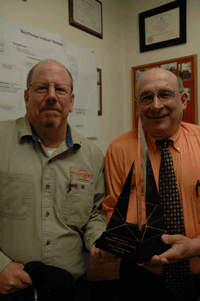
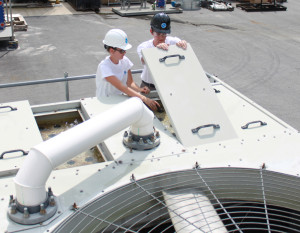
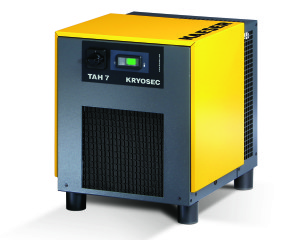
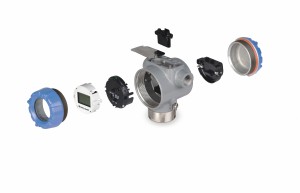

 By Ken Bannister, Contributing Editor
By Ken Bannister, Contributing Editor